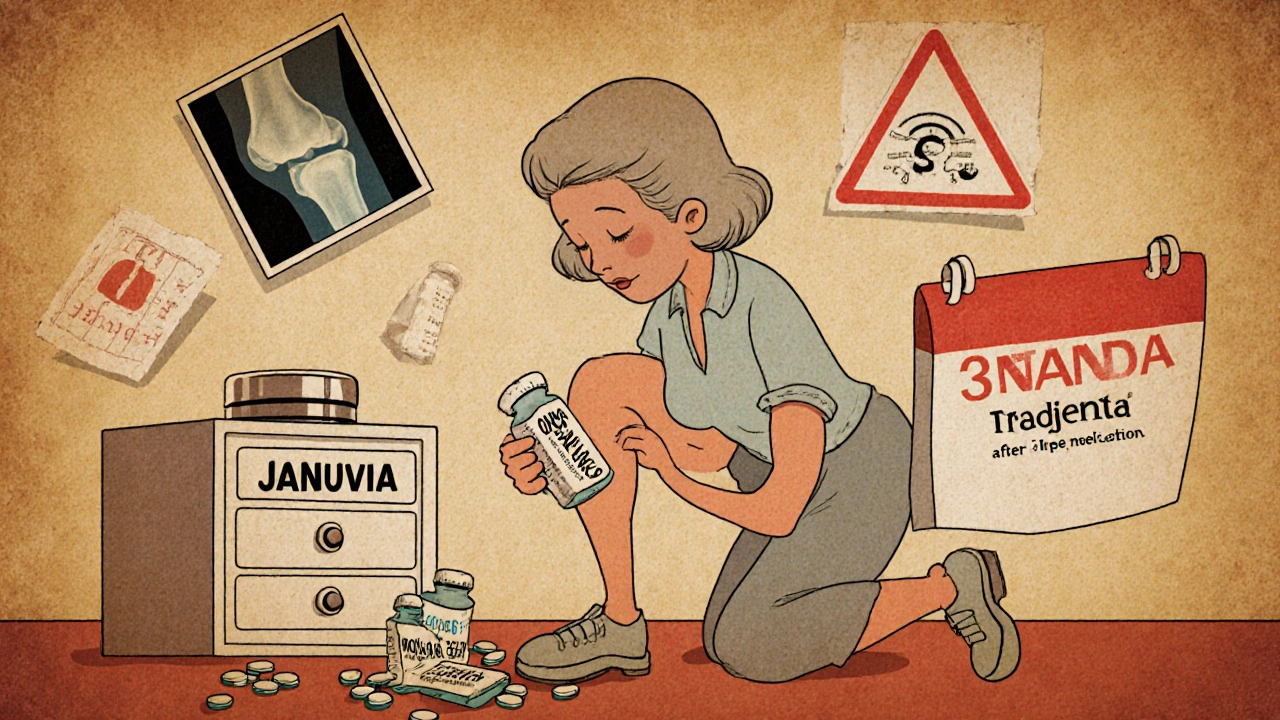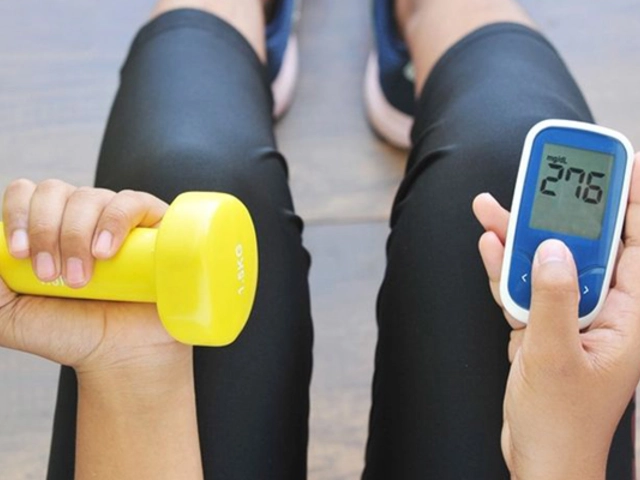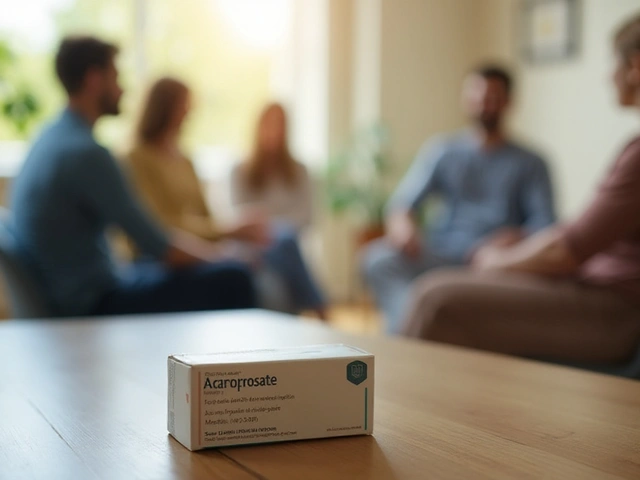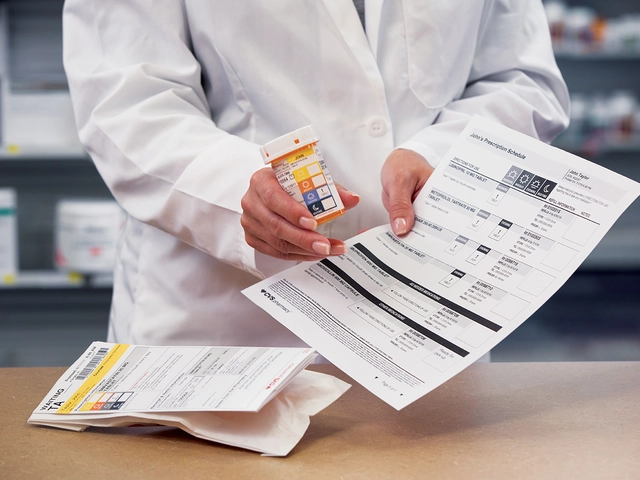DPP-4 Inhibitors and Joint Pain: What You Need to Know
DPP-4 Inhibitor Joint Pain Assessment Tool
Understanding Your Symptoms
Joint pain from DPP-4 inhibitors (like Januvia, Onglyza, or Tradjenta) can be severe and disabling. This assessment tool helps you determine if your pain might be related to your medication. Remember: if you have severe joint pain while taking a DPP-4 inhibitor, talk to your doctor immediately.
If you're taking a DPP-4 inhibitor for type 2 diabetes, and your knees, hips, or hands have started hurting out of nowhere, you're not imagining it. This isn't just normal aging or overuse. The FDA confirmed in 2015 that these common diabetes medications can cause severe, disabling joint pain - and it's more common than most doctors realize.
What Are DPP-4 Inhibitors?
DPP-4 inhibitors are oral pills used to lower blood sugar in people with type 2 diabetes. They work by blocking an enzyme called DPP-4, which breaks down natural hormones that help your body release insulin after meals. By keeping those hormones active longer, your pancreas makes more insulin when it's needed - without causing dangerous lows like some other diabetes drugs.
The most common ones you’ll hear about are:
- Sitagliptin (Januvia)
- Saxagliptin (Onglyza)
- Linagliptin (Tradjenta)
- Alogliptin (Nesina)
- Vildagliptin (Galvus - not sold in the U.S.)
Since Januvia was approved in 2006, millions of prescriptions have been written. They’re popular because they’re weight-neutral, don’t usually cause low blood sugar on their own, and are taken once a day. But behind the convenience is a hidden risk: joint pain so bad it can stop you from walking.
The FDA Warning You Might Not Have Heard
In August 2015, the FDA issued a safety alert after reviewing over 7 years of adverse event reports. They found 33 cases of severe joint pain linked to DPP-4 inhibitors - and that’s just what got reported. Most patients didn’t connect their pain to their diabetes pill until it was too late.
Here’s what the data showed:
- 28 cases tied to sitagliptin (Januvia)
- 5 to saxagliptin (Onglyza)
- 2 to linagliptin (Tradjenta)
- 1 to alogliptin (Nesina)
- 2 to vildagliptin
What’s scary is that 5 patients had the pain return when they took the same drug again - even after stopping it for weeks. That’s a textbook sign the drug was the cause, not coincidence.
What Does the Pain Feel Like?
This isn’t a mild ache after gardening. Patients describe it as:
- Deep, constant pain in multiple joints - knees, hips, shoulders, wrists
- Worse in the morning or after resting
- So intense it makes walking, climbing stairs, or holding a coffee cup impossible
- Not relieved by rest, ice, or over-the-counter painkillers
In 10 of the 33 cases, people ended up in the hospital because they couldn’t move. One woman, 58, started feeling sharp knee pain three weeks after beginning Januvia. She thought she had arthritis. Her doctor ordered X-rays - nothing. Then she stopped the drug. Within two weeks, the pain vanished. When she accidentally restarted it, the pain came back in 48 hours.
That’s not rare. The FDA found that 23 of the 33 patients got better within a month of stopping the medication. That’s the biggest clue: if your joint pain disappears after quitting the drug, it’s likely the cause.

How Common Is This Really?
You might think, “If it’s so bad, why are doctors still prescribing these?”
Because severe cases are rare - but not unheard of. In clinical trials, about 5-10% of people reported mild joint discomfort. But disabling pain? That’s estimated at less than 1 in 1,000 users. Still, with 35 million Januvia prescriptions written each year in the U.S., that’s thousands of people affected.
Some studies disagree. A large Taiwanese study found no link. But that study relied on medical coding - and if a patient’s pain was labeled “osteoarthritis” or “muscle strain,” it disappeared from the data. Real people don’t get diagnosed that way. They feel pain. Then they stop the drug. And it goes away.
A 2021 study using real-world data from over 250 million Americans found DPP-4 inhibitor users had a 24% higher risk of needing medical care for joint pain compared to users of other diabetes drugs. That’s not noise - that’s a signal.
Why Does This Happen?
No one knows for sure. But scientists have theories.
DPP-4 isn’t just found in the pancreas. It’s everywhere - in the joints, the skin, the immune system. When you block it, you’re changing how immune cells behave. Some researchers think this might trigger low-grade inflammation in the joints, similar to how certain drugs can cause lupus-like reactions.
Another clue: skin reactions like bullous pemphigoid - a blistering condition - have also been linked to DPP-4 inhibitors. Both joint pain and skin blisters are immune-mediated. That suggests the same underlying mechanism might be at play.
It’s not about the dose. It doesn’t matter if you’re on 25 mg or 100 mg. It’s about your body’s reaction. Some people are just more sensitive.
What Should You Do If You Have Joint Pain?
Don’t panic. Don’t quit cold turkey. But don’t ignore it either.
The FDA’s advice is simple: Contact your doctor immediately if you develop severe, persistent joint pain.
Here’s what to ask for:
- “Could this be from my DPP-4 inhibitor?”
- “Can we stop it for 4-6 weeks and see if the pain improves?”
- “If it gets better, can we try a different diabetes drug?”
Most patients see improvement within 1-4 weeks of stopping the drug. If it comes back after restarting it? That’s your answer.
Your doctor might check for rheumatoid arthritis, gout, or lupus. But if all those tests come back normal and you’re on a DPP-4 inhibitor? That’s the red flag.

What Are the Alternatives?
If you need to stop your DPP-4 inhibitor, you’re not left without options. Here are common alternatives:
| Medication Class | Examples | Pros | Cons |
|---|---|---|---|
| Metformin | Glucophage, Fortamet | First-line, cheap, helps with weight, low hypoglycemia risk | GI upset, vitamin B12 deficiency over time |
| SGLT2 Inhibitors | Empagliflozin, Canagliflozin | Cardiovascular and kidney benefits, weight loss | Yeast infections, dehydration risk, rare ketoacidosis |
| GLP-1 Receptor Agonists | Metformin, Semaglutide | Strong glucose control, weight loss, heart protection | Injections, nausea, higher cost |
| Sulfonylureas | Glyburide, Glipizide | Effective, low cost | High risk of low blood sugar, weight gain |
Many patients switch to SGLT2 inhibitors like Jardiance or GLP-1 drugs like Ozempic - not just because they avoid joint pain, but because they offer extra heart and kidney protection. If your doctor hasn’t mentioned these, ask why.
What About Long-Term Use?
Some people take DPP-4 inhibitors for years without issues. That’s true. But the FDA warning says pain can show up after 1 year - or even 2. It’s not just a “new drug” problem.
If you’ve been on Januvia for three years and suddenly your ankles feel stiff, don’t brush it off. That’s not normal aging. That’s a possible side effect. Your body changes. So can your reaction to a drug.
Doctors often miss this because joint pain is so common. But if your pain is new, unexplained, and doesn’t respond to usual treatments - the pill you’re taking every morning might be the culprit.
Bottom Line: Stay Informed, Speak Up
DPP-4 inhibitors work well for millions. But they’re not harmless. The risk of severe joint pain is small, but the impact is huge. If you’re in pain, it’s not “all in your head.” It’s real. And it’s fixable.
Here’s what to do today:
- Write down when your joint pain started and how bad it is
- Check which diabetes drug you’re taking - is it a DPP-4 inhibitor?
- Call your doctor and say: “I think my joint pain might be from my diabetes pill.”
- Don’t wait for your next appointment. If the pain is disabling, ask for a sooner visit.
You’re not being difficult. You’re being smart. And you’re not alone. Thousands have been through this - and got their lives back after stopping the drug.
Can DPP-4 inhibitors cause joint pain even after years of use?
Yes. While many cases show up within the first month, the FDA confirmed that joint pain can develop after 1 year or more of continuous use. Patients who took DPP-4 inhibitors for over a year still experienced severe pain, and symptoms resolved after stopping the medication. This means long-term users shouldn’t assume they’re immune.
If I stop my DPP-4 inhibitor, will my blood sugar go up?
Possibly - but not necessarily. Many patients who stop DPP-4 inhibitors switch to other medications like metformin, SGLT2 inhibitors, or GLP-1 agonists that control blood sugar just as well - or better. Your doctor will help you transition safely. Never stop your diabetes medication without a plan.
Is joint pain from DPP-4 inhibitors permanent?
No. In 23 out of 33 documented FDA cases, joint pain resolved within one month of stopping the drug. For most people, pain fades gradually over days to weeks. If symptoms return after restarting the drug, it confirms the link. Permanent joint damage from these drugs has not been reported.
Why wasn’t this side effect known earlier?
Clinical trials are too short and too small to catch rare side effects. Joint pain is also common in older adults with diabetes, so it was often blamed on arthritis or aging. It took real-world reports - from patients who connected the dots - for the FDA to recognize the pattern. That’s why post-market surveillance is critical.
Should I get tested for rheumatoid arthritis if I have joint pain?
Yes - but don’t assume that’s the answer. Doctors should rule out autoimmune conditions like rheumatoid arthritis, lupus, or gout. But if those tests are normal and you’re on a DPP-4 inhibitor, the drug should be considered the likely cause. Many patients were misdiagnosed for months before the connection was made.







8 Comments
Rachel Wusowicz
November 15, 2025 at 11:20
So... let me get this straight: the FDA knew about this since 2015, but doctors are still prescribing Januvia like it's candy? And now we're supposed to trust Big Pharma when they say 'it's rare'? LOL. I bet if you dug into the clinical trial data, you'd find the pain was listed as 'musculoskeletal discomfort' to make it disappear. I know a woman who lost her ability to walk for six months-her rheumatologist said 'it's just aging'-until she Googled Januvia and stopped it. Poof. Gone. Like magic. But no one talks about this. Why? Because if patients knew, they'd stop buying. And that's not profitable, is it?!!!
Latrisha M.
November 17, 2025 at 09:35
If you're on a DPP-4 inhibitor and experiencing unexplained joint pain, talk to your doctor. Don't ignore it. Don't panic. But do document it-when it started, how bad it is, whether it's worse in the morning or after rest. These symptoms are real, and they're reversible in most cases. Your provider can help you switch to a safer alternative like metformin or an SGLT2 inhibitor. You're not overreacting. You're being proactive.
Diane Tomaszewski
November 17, 2025 at 22:36
It's strange how we trust pills to fix things but forget our bodies are always talking. If your joints hurt out of nowhere and the pain vanishes when you stop the drug, that's not coincidence. That's your body saying 'this isn't right.' We treat medicine like it's magic when really it's chemistry. And chemistry has consequences. Sometimes simple is better. Move. Eat real food. Don't just add another pill to the mix.
Dan Angles
November 19, 2025 at 11:27
It is imperative that patients who experience unexplained arthralgia while on DPP-4 inhibitors seek immediate medical consultation. The temporal association between drug initiation and symptom onset, coupled with resolution upon discontinuation, constitutes a compelling causal inference in pharmacovigilance. Furthermore, the FDA's Adverse Event Reporting System (FAERS) remains a critical tool for post-marketing surveillance. Physicians are advised to maintain heightened clinical vigilance and to document all suspected adverse reactions with precision.
David Rooksby
November 19, 2025 at 15:49
Oh wow, so now we're supposed to believe that the FDA actually gives a damn? Please. They only act when someone dies or when a lawsuit hits six figures. This whole thing is a classic case of corporate negligence wrapped in bureaucratic legalese. They knew. They knew for years. They had thousands of reports. But they didn't do jack until someone with a blog and a YouTube channel made it go viral. And now? Now they slap a tiny warning on the label and call it a day. Meanwhile, your neighbor's 67-year-old mom is in a wheelchair because her doctor told her it was 'just arthritis.' And guess what? She's still on Januvia. Because her doctor doesn't read the fine print. Or maybe he does and just doesn't care. Either way, you're a walking statistic until you figure it out yourself. And that's the real scandal.
Melanie Taylor
November 19, 2025 at 20:37
OMG I JUST REALIZED MY KNEES HAVE BEEN KILLING ME SINCE I STARTED TRADJENTA LAST YEAR!!! 😱 I thought I was getting old or maybe I did too much yoga... but now I'm scared to even walk to the mailbox. I'm calling my dr tomorrow and asking if it could be the pill. THANK YOU FOR THIS POST!!! 🙏❤️
Teresa Smith
November 21, 2025 at 16:56
This is exactly why patient advocacy matters. You are not a passive recipient of care-you are the CEO of your own health. If your doctor dismisses your pain as 'normal aging,' push back. Demand a drug holiday. Track your symptoms. Bring this article to your appointment. Knowledge is power, and silence is complicity. You deserve to move without pain. Don't let inertia keep you on a drug that might be stealing your mobility. Switch. Ask. Fight. Your future self will thank you.
ZAK SCHADER
November 22, 2025 at 20:51
Why are we even using these drugs? Just take metformin like normal people. This is why America's healthcare is broken. You got some pharma rep pushing some fancy new pill and now old folks are in wheelchairs because nobody checks the side effects. I don't care if it's 'rare'-if it happens to you, it's 100%. And now the FDA says 'oops' after years of people suffering? Pathetic. We need to sue these companies into oblivion. Not just complain on Reddit.